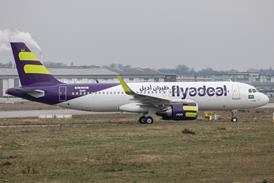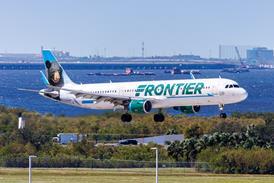Will seat designs of the future let economy passengers dream in peace? Airlines are under pressure to provide more comfort
Sleep is essential to human health and well-being. Yet since the late 1940s, when airlines began flying pressurised propeller aircraft across the Atlantic with sleeping berths on board, such accommodation in the air has been largely reserved for the wealthy.
Even today, as modern jetliners ferry premium- and economy-class passengers on ultra-long-haul, overnight flights, only those with access to deep corporate or personal pockets can enjoy lie-flat or near lie-flat seating options up front.
The back of long-haul aircraft, where throngs of coach passengers make camp, is practically unaltered. The space is virtually indistinguishable from the interior of short-haul aircraft, where passengers are crammed into row after row of tightly packed seats.
But this picture of discomfort seems set to change as competition for passengers stiffens. Over the next few decades, the lucrative niche market that is first class "will increasingly be attracted to the fractional [ownership] and private jet market" as these well-heeled customers seek out convenience and exclusive service, suggests A I "Indi" Rajasingham, founder, chairman and chief executive of engineering company MmillenniumM Group.
This will leave airlines increasingly dependent on the broad market and under pressure to provide comfort as well as utility, says Rajasingham. At the same time, he says, as new markets open from China and India, airlines will need to cater to passengers who are highly motivated to travel globally for business, but who may not be affluent initially. "Capturing these lower-cost markets - particularly for overnight trips where sleep plays a critical role - could prove tempting to carriers."
INCENTIVES
Designer James Park of James Park Associates (JPA) believes there are good reasons for airlines to adopt new economy-cabin designs, especially now. "There are incentives to save money, incentives to reduce the cost of ownership and, with passengers being more cautious about flying, I think there are incentives to provide higher levels of comfort in economy."
But plenty of challenges still need to be overcome. "It's extremely difficult to keep the ticket price low while providing massive improvements in the comfort and amenity in the seat," says Park. "Significant change in economy seating requires a lot of research and development and the cost of that is enormous.
"The aviation industry isn't like the motor industry, where huge sums can be invested in R&D and huge risks can be taken because millions of units are going to be sold. With an aircraft seat, the investment is followed by a fairly limited production run and fairly small margins, so the risks are higher and the returns are lower. These are not ideal circumstances for developing something radically different."
If MmillenniumM Group could write the future, the luxury of being able to lie back and sleep will not be reserved for premium passengers. The company has designed a stacked seating approach for all segments, from economy-class to "super business", called the Air Sleeper.
 |
|---|
© MmillenniumM GroupMmillenniumM Group's Air Sleeper stacked seating approach is designed for all segments |
"Developing an Air Sleeper for economy class was our biggest challenge because we had to use every inch of space and the physics of motion very carefully to allow both a seated and a flat position with all the safety considerations. Economy seating would generally be two stacked, but would have the same number of people as [current coach cabins] have now," says Rajasingham.
He believes the offering most likely to be immediately attractive is a premium economy model, which can support a 190cm (75in) lie-flat experience.
"It is very much like most business-class standard seats now around the world, with a comparable width, but with about two to three times the number of seats as in conventional business class, thereby reducing the cost per seat for the airlines," he says, adding that a Middle Eastern carrier has already shown interest.
"One of our premium offerings has a larger bed than the new Singapore Airlines business class, but with a 3D footprint almost one-third of the SIA seats," he claims.
JPA, which designed SIA's award-winning Airbus A380 business class seat, is no stranger to the concept of stacked sleeper seats. "We developed a stacked sleeper bed concept in 2001 and I think that it's quite an interesting idea because it could make a lot of difference to how the airframe is constructed. It certainly has its attractions. It could save a lot of cost on the construction of the fuselage, and make much better, fuller use of the aircraft design and the available interior space," says Park.
 |
|---|
© JPA DesignJPA's stacked sleeper concept was "an exercise in creativity, rather than a business-led solution" |
He warns, however, that one of the niggling issues is how to get in and out of a stacked sleeper seat in an elegant way. "How do you make it so that people wouldn't feel awkward getting into the upper seat and out again? And how do you perceive the space - might it feel very claustrophobic?"
While JPA's stacked sleeper concept, which was designed for business class, "worked very nicely", says Park, it was nonetheless "an exercise in creativity, rather than a short- or medium-term, business-led solution".
For a radical concept like that to be adopted, Park believes it would have to happen at the time a new aircraft is on the drawing board to exploit the real structural benefits. "Keeping in view the distribution of cool air, and with the spine down the centre of the plane, lighting, wiring, the need for structural supports for the upper seats, etc - too much would need to be changed or modified within an existing airplane."
Howard Guy, co-founder of UK-based Design Q - which played a key role in the design of Virgin Atlantic's widely acclaimed "Upper Class" seats - is sceptical that there is a business case for stacked sleeper seats in economy.
"Regulations say you have to be in a sitting position for take-off and landing. You can't take off and land in a bed position. That means that if you have a seat that translates into a bed, you have a high cost item, and you have an item that takes up more space and it becomes a business class product. The equation doesn't work and the business model doesn't work."
As is the case in any new interiors development, regulations governing fire safety and seat strength must be adhered to as designers consider stacked sleeper solutions. "Those beds have to meet the 16g rule," says Hans Weber, president of aerospace consultancy Tecop International. This requires that all transport category aircraft operating under scheduled airline FAR Part 121 certification rules have seats that can withstand a 16g force impact while staying on the track and ensuring occupant safety.
Rajasingham insists that MmillenniumM Group targets certification in any position - "a world first". He is not aware of any competitors. "Our technologies are protected by issued and pending patents," he says, noting, however, that the company believes Lufthansa Technik is taking a strategic look at a sleeper concept.
IMPROVING COMFORT
The German carrier's unit is certainly "looking at how to improve the comfort of the poor people who sit down the back", says Lufthansa Technik director innovation engineering Andrew Muirhead.
To that end, a new economy-class seat is under development that "is very out of the box", he says. "The colleagues who thought this thing up got downgraded to economy class too many times and spent the entire time trying to find out how to make it more comfortable." A prototype could be ready in 2009.
Although the seat will not be a stacked sleeper, Muirhead believes the design will be "as revolutionary to the economy class seat as Aerokid is".
Aerokid solves the long-standing logistical problem of child seats on aircraft. It is a totally integrated seating system that can be quickly configured for babies and infants up to two years in age or as a child seat. In the cradle-mode the seat offers a semi-reclining position. This mode "can also be switched into a full-flat position, optimal for sleeping", says Lufthansa Technik.
It is a position that MmillenniumM Group's Rajasingham firmly believes all passengers, big and small, should be able to enjoy. "The fundamental problem is that the industry now thinks of long haul as a mechanical process, but there are people involved and people have needs," he says.
"Sleep is integral to comfort. The natural human cycle needs sleep within every 24h period. The ideal marketing approach would be for airlines not to break the human cycle."
Source: Flight International























